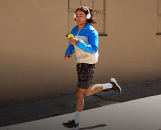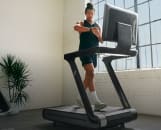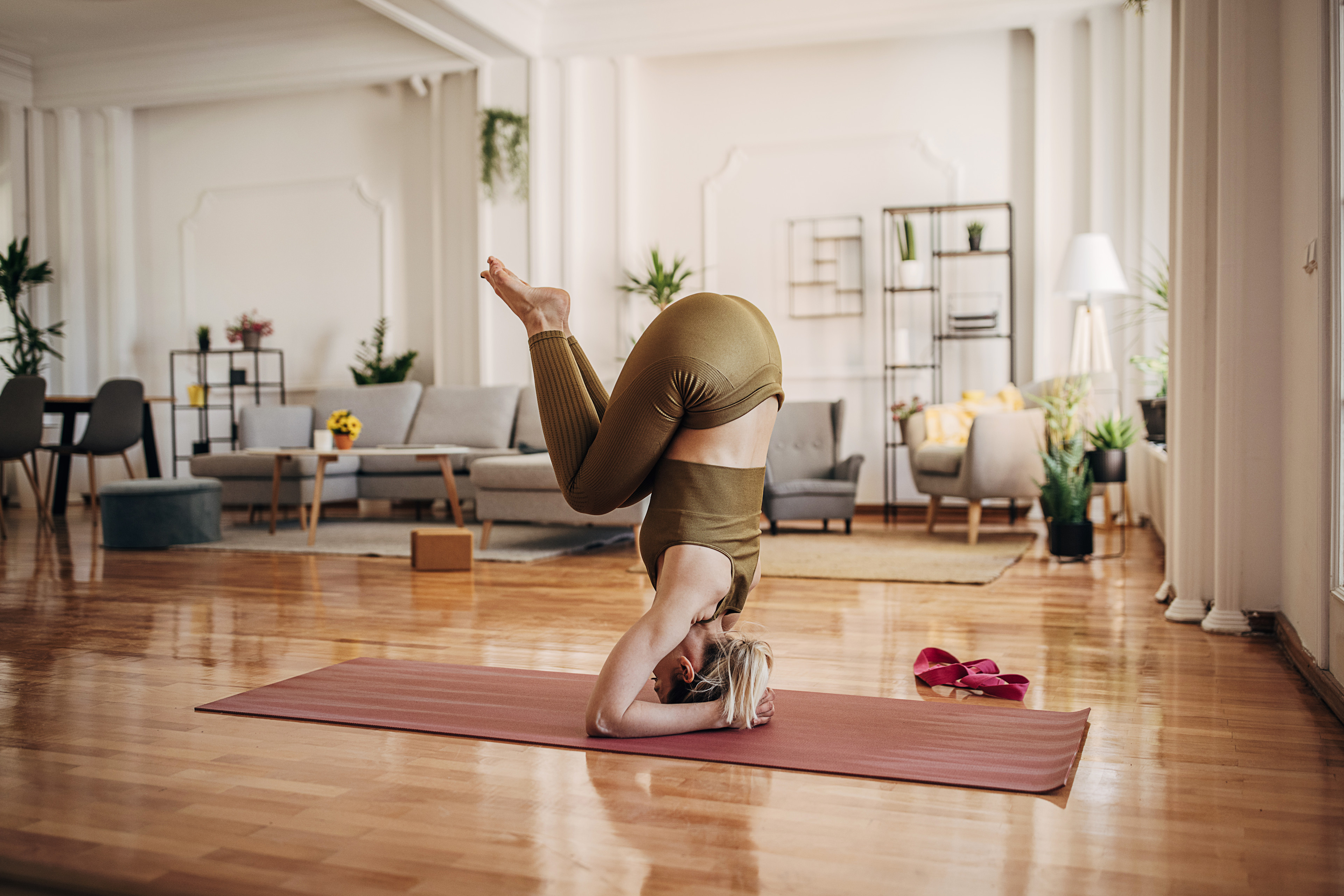
South_agency via Getty Images
How to Slowly—and Safely—Master a Headstand In Yoga
Learn how to progress through this empowering yoga pose from the ground up.
By Ingrid Yang•
What Is the Headstand Pose (Sirsasana) in Yoga?
The Benefits of Yoga Headstands
Yoga Poses to Master Before Doing Headstands
How to Correctly Do a Headstand in Yoga
How Long Should You Hold a Headstand?
Common Headstand Mistakes to Avoid
Yoga Headstand Variations and Modifications
Who Are Yoga Headstands Best Suited for?
The Takeaway
In yoga, few poses are as iconic, or as humbling, as the Headstand. Known as Sirsasana, this powerful inversion builds strength, challenges focus, and invites you to explore your relationship with fear and control. But it’s not a pose to rush into. With the right preparation, guidance, and mindset, working toward a headstand can become one of the most transformative parts of your practice.
Peloton instructor Aditi Shah emphasizes the importance of patience and intentional progression: “Going slowly is not the issue—giving up without giving yourself a chance is.” Her approach focuses on building strength gradually, creating a sense of safety, and honoring your own pace. No matter where you start, taking your time is the key to building a sustainable practice.
This guide will walk you through Headstands in yoga, why they’re worth working toward, and how to build your practice safely and mindfully.
What Is the Headstand Pose (Sirsasana) in Yoga?
The yoga Headstand is a classic inversion posture where your body is turned upside down, with the head and forearms providing your foundation. Known as the “king of yoga poses,” Sirsasana challenges your strength and focus, and invites you to see things from a new perspective.
Despite how impressive it may look, Headstand is less about showing off and more about deepening your connection to your body and breath. And for many, it’s a personal milestone that represents moving past self-doubt and fear.
The Benefits of Yoga Headstands
The benefits of headstands go well beyond aesthetics. This pose helps build full-body strength, particularly in the shoulders, arms, and core. It also encourages balance, improves proprioception (your body’s ability to sense its position and movement in space), and teaches you how to move with precision.
Physiologically, inverting the body can support circulation and stimulate the lymphatic system. It can also be energizing and provide mental clarity.
On an emotional level, learning to go upside down fosters resilience. “Noticing and changing your relationship to challenge, fear, failure, etc., is an important part of what you learn through yoga,” Aditi says. “Courage is not the absence of fear, but the ability to move past that feeling to create action.”

Peloton App
Access thousands of classes with no equipment needed.
Yoga Poses to Master Before Doing Headstands
A strong headstand starts with a solid foundation, and that’s built by developing shoulder stability, core strength, and body awareness. Aditi recommends a range of preparatory poses to help you progress safely.
“One of my favorite exercises to build strength and mobility is just transitioning from Downward Facing Dog (Adho Mukha Svanasana) to Dolphin (Ardha Pincha Mayurasana) and back,” she says.
Other helpful poses she suggests include:
Cow Face Pose (Gomukhasana)
Bound Hands Pose (Baddha Hastasana)
Eagle Pose (Garudasana)
Forearm Plank (Phalakasana Ii)
Standing Forward Fold (Uttanasana)
Child’s Pose (Balasana)
These postures reinforce the foundational alignment and breath awareness needed for safe inversions. In the Peloton App, you can take Focus Flow classes dedicated to many of these individual poses.
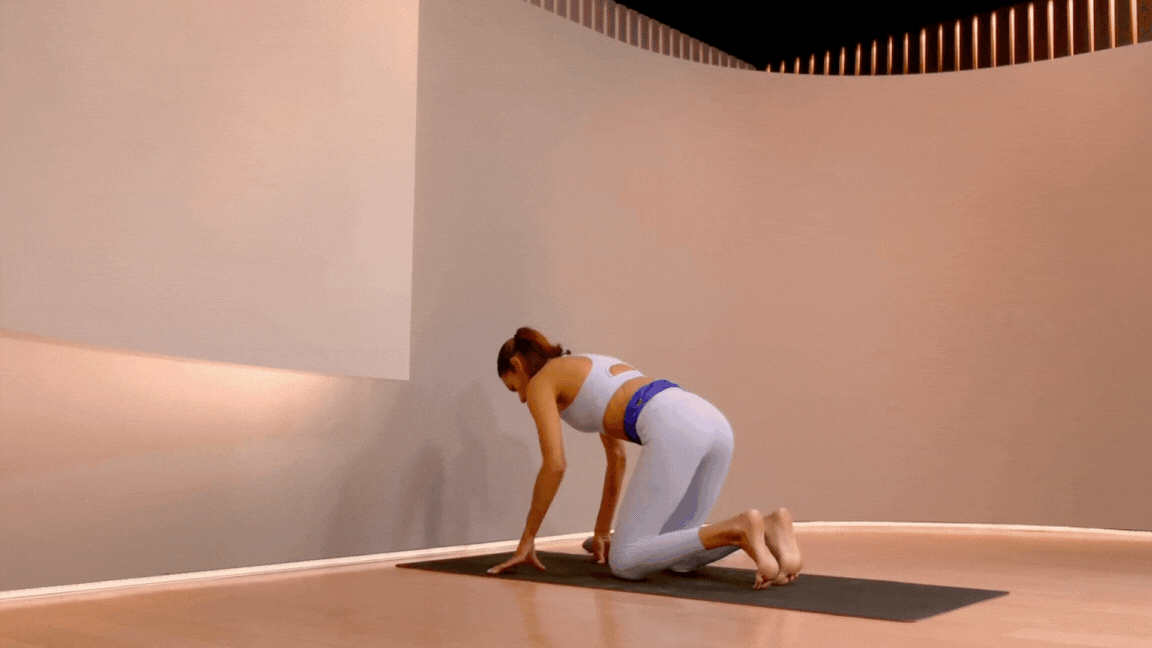
How to Correctly Do a Headstand in Yoga
Follow these mindful steps for approaching Headstand. Pro tip: To create a safe environment while you’re still learning, Aditi recommends placing your mat about a foot away from a wall for support. This allows you to feel protected from falling over without relying too heavily on the wall.
If you’re looking for a guided yoga flow to take you through these steps, check out some of the headstand-focused classes on the Peloton App.
1. Find Tabletop Pose (Bharmanasana)
Start in Tabletop position, with your hands under your shoulders and your knees under your hips, on all fours. Then, lower your forearms to the floor, making sure your elbows are shoulder-width apart. Interlace your fingers to create a cradle for the back of your head.
2. Place Your Head on the Floor
Place the crown of your head on the mat, gently cupped by your hands. Make sure the back of your skull is resting in your interlaced fingers, not your neck.
3. Shift Your Weight Into Your Arms
Lift your knees and straighten your legs, entering a shape similar to Dolphin Pose. Walk your feet slowly toward your elbows, bringing your hips above your shoulders and shifting your weight into your upper body so your feet feel light.
Pause here and check in with your alignment. “Press down with the forearms,” Aditi advises. “Use the upper back, arms, and shoulders to avoid dumping weight into the neck. Stack the joints and pull everything in towards the midline.” As you proceed through the next few steps, tune into your breath and take your time. You want to feel like you’re in control of your movements, she says.
4. Lift One Foot at a Time
In this Dolphin-like position, lift one foot off the floor, drawing your knee in toward your chest using your core strength. When you feel balanced, draw in the other leg, bringing both knees into your chest to create an egg shape. In this position, your hips should be stacked directly above your shoulders. This compact hold helps you find balance without relying on momentum. If this feels uncomfortable for your neck, come down slowly, one foot at a time. You may need a break or to adjust the placement of your head on the mat.
5. Extend Your Legs Toward the Ceiling
Once you feel stable, begin to slowly extend both legs upward. Press firmly into your forearms, lifting through the shoulders to avoid putting too much weight on your head and neck. Keep your core engaged, and avoid arching your back or flaring your ribs open. Your body should form a straight line, feet stacked over knees, hips, shoulders, and elbows.
6. Hold and Breathe
Stay for a few breaths, then come down slowly and mindfully, first returning to the egg shape, then lowering one foot at a time to the mat. Rest in Child’s Pose.
How Long Should You Hold a Headstand?
For beginners, even holding Headstand for a few breaths can be plenty. As your strength and confidence improve, you might gradually work up to 30 seconds. Focus on quality over duration, releasing from the pose when you feel strain is far better than pushing past your limits.
Common Headstand Mistakes to Avoid
Rushing into Headstand or skipping key prep steps is a recipe for frustration—or worse, injury.
“My journey to Headstand was long,” Aditi says. “I focused on feeling like my movements were really in my control, creating safety by setting my mat up a foot away from a wall, and taking my time, and not rushing…I probably spent a year building strength, another year upside down in an egg shape, and a year having the wall available to me before being able to do it in the center of my mat.”
Otherwise, one of the most important things to remember: Do not hop or jump into Headstand unless you're able to fully control the movement. Using momentum to kick up can cause you to lose control and put unnecessary pressure on your neck and spine. Other common mistakes include:
Dumping weight into the neck and head instead of distributing effort through the forearms and shoulders.
Neglecting proper alignment, especially when the joints are not vertically stacked.
Skipping foundational poses, like Dolphin and Forearm Plank, which build the necessary strength and awareness.
It’s a helpful reminder that Headstand isn’t a milestone to rush toward; it’s a practice to grow into, with patience, intention, and respect for your body’s own timeline.
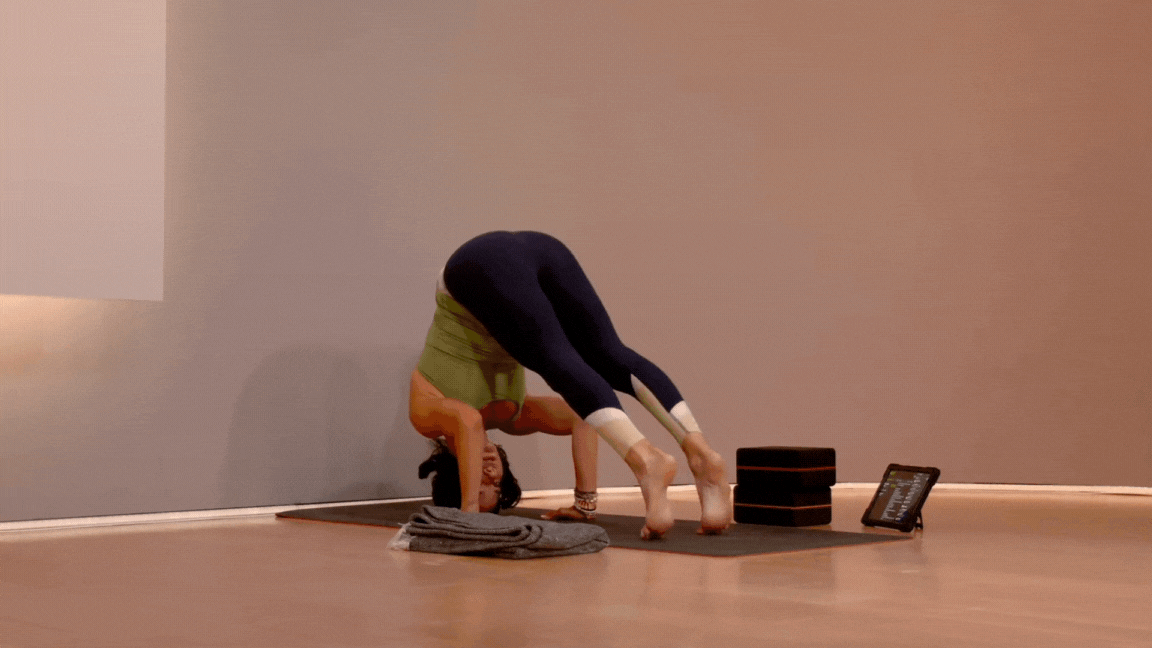
Yoga Headstand Variations and Modifications
There’s no one-size-fits-all approach to Headstand. Depending on your needs, you might find these variations and props helpful:
Wall-supported Headstand: Great for beginners to build confidence and avoid falls.
“Egg shape” hold: Keeping the knees tucked helps lower your center of gravity.
Using a Headstand bench: Some practitioners use a Headstand bench to reduce pressure on the neck and shoulders while still experiencing the benefits of a yoga inversion; however, not everyone finds them essential. “I’ve never used a Headstand bench, and don't know if I think it's necessary,” Aditi says.
More challenging variations can also be fun to work up to, but be sure you have your basic Headstand down first before trying these advanced postures:
Tripod Headstand: A variation (demonstrated above by Peloton instructor Mariana Fernández) where the hands and head form a triangle on the mat, allowing for arm balance and transitions like pressing up from Crow Pose.
Lotus Headstand: After lifting up into the classic version of Headstand, fold your legs into Lotus Pose. Optionally, you then can bend at the waist to fold your legs to hip height.
Wide-Legged Headstand: Legs extend wide to the sides, adding a hip-opening element.
Choose what supports your body today, and stay curious as your practice evolves.
Who Are Yoga Headstands Best Suited for?
Headstands aren’t for everyone, and that’s okay. It’s important to approach this pose with respect for your unique body and life context.
Practitioners with a solid foundation in yoga, including good core stability, strong shoulder support, and the ability to maintain steady breath while upside down, may benefit from working toward Headstand.
Still, it’s essential to honor your physical boundaries and proceed thoughtfully—confidence should never replace caution. “Pregnant people, and folks with shoulder, spine, and neck injuries should check with a medical professional before attempting a headstand,” Aditi advises. “There are other exceptions as well: people who struggle with vertigo, inner ear issues, etc.”
Other people who may want to avoid Headstand include:
Those with uncontrolled high blood pressure or glaucoma, as the inversion can increase pressure in the eyes and head.
People with recent concussions or neurological issues, due to the strain and positioning of the cervical spine.
Anyone actively experiencing anxiety or dizziness, as being upside down can be destabilizing.
If you’re unsure, ask. And when in doubt, skip it. There’s no prize for pushing through, and plenty of other ways to reap the benefits of inversions through gentler alternatives like Legs Up the Wall or Supported Bridge Pose. Yoga is about tuning in, not forcing it.
The Takeaway
“No pose is a destination, and headstand is no exception,” Aditi says. It’s an exploration that teaches you to be steady, brave, and patient with yourself. “Take one step further than what you are comfortable with,” Aditi says. “Dip one toe beyond your perceived boundaries. Little by little, this is how we grow into spaces we don’t necessarily even know are possible.”
Start where you are. Go at your own pace. And remember, you’re already doing the work.
This content is for informational and educational purposes only and does not constitute individualized advice. It is not intended to replace professional medical evaluation, diagnosis, or treatment. Seek the advice of your physician for questions you may have regarding your health or a medical condition. If you are having a medical emergency, call your physician or 911 immediately.
Want to strengthen your yoga practice?
We can help. Enter your email to get articles, instructor tips, and updates from Peloton sent to your inbox.
By providing your email address, you agree to receive marketing communications from Peloton.
For more about how we use your information, see our Privacy Policy.
